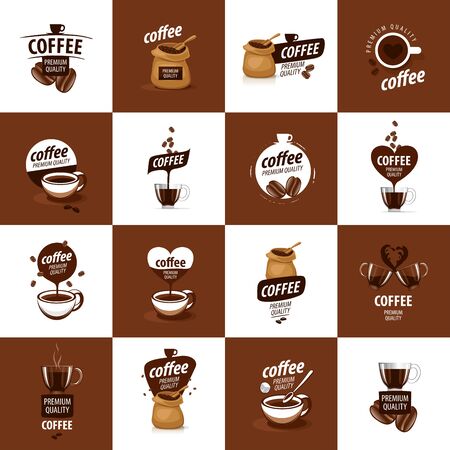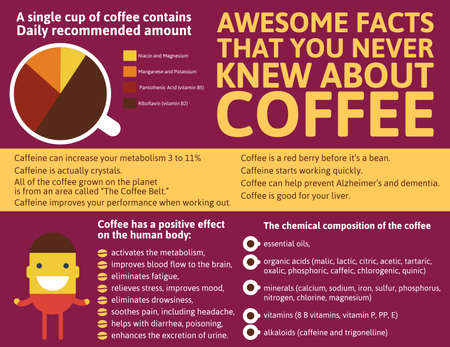Introduction: Coffee, Culture, and Language
Coffee is more than just a drink in the UK; it is a reflection of cultural identity, social rituals, and regional preferences. As coffee culture continues to flourish from bustling London high streets to cosy cafés in Yorkshire, the language used to describe this beloved beverage becomes a fascinating mirror of British society itself. The words we choose—whether describing a flat white’s “velvety microfoam” or a filter brew’s “nutty undertones”—are shaped by our experiences, backgrounds, and even unconscious biases. This interplay between coffee and language offers rich ground for exploration, as it reveals not only what Britons taste but also how they think and communicate about flavour. By delving into the relationship between cultural context and linguistic expression, we can begin to understand how deeply ingrained habits and histories shape the narrative around every cup of coffee enjoyed across the UK.
Historical Context: British Coffee Traditions
Coffee’s journey in the UK began in the mid-17th century, when the first coffee houses opened in London. These establishments quickly became social hubs for intellectuals, merchants, and politicians—a stark contrast to their continental European counterparts. Over the centuries, coffee’s presence waxed and waned alongside tea, which ultimately became the British national beverage. However, coffee never disappeared entirely; rather, it adapted to changing tastes and cultural trends.
The Evolution of Coffee Consumption in Britain
| Period | Key Developments | Dominant Flavour Preferences |
|---|---|---|
| 17th–18th Century | Introduction of coffee houses; centres for debate and commerce | Strong, bitter brews; minimal focus on flavour nuances |
| 19th Century | Tea overtakes coffee in popularity; home brewing grows | Milder blends gain traction; emphasis on accessibility over complexity |
| 20th Century (Post-war) | Instant coffee boom; cafes re-emerge as social venues | Smoothness prized; little discussion of origin or tasting notes |
| 21st Century (Speciality Era) | Rise of independent coffee shops and specialty roasters | Growing interest in single-origin beans and detailed flavour descriptors |
Traditional Views on Flavour and Description
Historically, British consumers have valued familiarity and comfort over adventurous or nuanced flavour experiences. The language used to describe coffee has often reflected this preference—terms like “strong,” “milky,” or “smooth” dominated menus and packaging. Detailed sensory descriptions were rare outside expert circles until recently. As specialty coffee culture gained traction, British tastes started to shift towards a broader appreciation for complexity and provenance, yet traditional attitudes still inform how many Britons interpret flavour profiles today.

3. Cultural Tastes and Descriptive Bias
The UK’s coffee scene is as diverse as its regions, with distinct preferences emerging from cities like London, Edinburgh, Manchester, and Cardiff. These regional variations do not simply affect what’s brewed; they shape the very language used to describe coffee. For example, in London’s cosmopolitan cafés, descriptions might focus on origin and complexity—terms such as “single-origin,” “floral notes,” or “bright acidity” are common. This reflects a consumer base attuned to international trends and specialty coffee culture.
Contrast this with the North of England or certain Welsh communities, where traditional tastes lean towards darker roasts and richer bodies. Here, descriptors like “hearty,” “full-bodied,” or even “proper strong” resonate more deeply. Social factors play a role as well: socioeconomic background, exposure to global food trends, and even class can influence how people talk about their cup. Coffee described as “artisan” or “hand-crafted” may carry different weight depending on the audience—sometimes inviting curiosity, other times perceived as pretentious.
Even within the same city, cultural enclaves create micro-climates of taste and language. In areas with high student populations, playful or experimental descriptors such as “hipster blend” or “Instagram-worthy latte art” become part of everyday vocabulary. Meanwhile, family-run cafés in suburban settings might favour straightforward language that emphasises comfort and tradition.
This interplay between cultural tastes and descriptive bias means that coffee menus across the UK are not just lists of drinks—they’re reflective of local identity and social dynamics. Understanding these subtleties is key for anyone seeking to navigate or contribute to Britain’s evolving coffee landscape.
4. Everyday Language: British Terminology and Slang
One of the most fascinating aspects of UK coffee culture is the way everyday language shapes our perception of a simple brew. British coffee lovers have developed a unique lexicon, blending classic terminology with regional slang, to describe their favourite drinks. This language not only reflects personal preferences but also reveals a deeper layer of cultural attitude and humour—a subtle nod to how Brits approach both coffee and conversation.
Distinctive Terms on the Menu
Coffee shops across the UK often feature terms and phrases that may seem unusual to outsiders. For example, while “flat white” has become ubiquitous, its popularity in Britain is tied to an appreciation for understated sophistication—less froth, more punch. Meanwhile, ordering a “builders brew” might raise eyebrows abroad, but here it signals a strong, no-nonsense cup beloved by tradespeople and office workers alike.
British Coffee Colloquialisms
| Term/Slang | Meaning | Cultural Nuance |
|---|---|---|
| Builders Brew | Strong tea or coffee, usually with milk and sugar | Working-class roots; practical and hearty |
| Cuppa | A cup of tea or sometimes coffee | Everyday comfort; informal hospitality |
| White Coffee | Coffee with milk (not cream) | Straightforward description; avoids pretension |
| Mucky Coffee | Coffee that’s particularly strong or murky-looking | Good-natured humour about intensity or appearance |
| Skinny Latte | Latte made with skimmed milk | A nod to health-conscious trends without losing wit |
| Posh Coffee | High-end or specialty coffee (often artisanal) | Tongue-in-cheek reference to class distinctions or indulgence |
| Splash of Milk / Dash of Milk | A small amount of milk added to black coffee/tea | Precision meets understatement—classic British restraint |
The Role of Humour and Understatement
The British approach to describing coffee is laced with self-deprecating humour and understated wit. Whether referring to instant coffee as “rocket fuel” or joking about “posh” cafés charging extra for oat milk, these expressions capture the national tendency to keep things light-hearted—even when discussing daily rituals. This linguistic playfulness not only makes ordering coffee a more communal experience but also subtly asserts British values: practicality over pretense, inclusivity over exclusivity, and always with a dash of irony.
5. The Influence of International Trends
Global coffee culture has had a profound effect on how British people describe and experience their daily brew. Over the past two decades, the UK has witnessed a rapid proliferation of specialty coffee shops, many inspired by international movements such as the third-wave coffee trend from Australia and America, or the enduring influence of Italian espresso culture. These trends have introduced new vocabulary into everyday British usage—terms like “flat white,” “single origin,” and “pour-over” are now commonplace on high street menus and in consumer conversations.
However, while international trends set certain standards and expectations, the British approach to coffee retains its own unique nuances. For instance, Italians might favour short, strong shots of espresso and rarely linger over large milky drinks, whereas in the UK, the latte and cappuccino remain perennial favourites—often served in larger cups with a preference for smoothness over strength. The British taste for adding milk (and occasionally sugar) persists even as black filter coffees gain traction among enthusiasts.
Interestingly, when it comes to describing flavour profiles, international terms like “bright acidity” or “notes of stone fruit” are increasingly adopted by UK baristas and coffee aficionados. Yet, these descriptors are frequently adapted or simplified for broader appeal; British menus may still refer to a coffee as “rich,” “smooth,” or even “comforting”—words that resonate with local cultural values around warmth and familiarity.
The influence of global trends is also evident in the way British consumers talk about provenance and ethical sourcing. While Scandinavian or American cafes may emphasise extreme transparency or highly experimental processing methods, UK coffee descriptions often balance these aspects with an emphasis on tradition, sustainability, and a sense of community belonging. This reflects not just borrowed language but an ongoing negotiation between international innovation and uniquely British preferences.
6. Breaking the Bias: Towards Inclusive Coffee Descriptions
To genuinely celebrate coffee’s diversity and make specialty coffee culture more accessible across the UK, it is crucial for professionals and enthusiasts to actively challenge ingrained cultural biases in tasting notes.
Rethinking the Reference Points
Most coffee descriptions in the UK still rely heavily on flavour comparisons familiar to certain backgrounds—think “blackcurrant,” “digestive biscuit,” or “sticky toffee pudding.” While these references resonate with many, they can inadvertently exclude those with different upbringings or culinary experiences. A conscious effort to include broader descriptors or even brief explanations alongside traditional British reference points can help bridge this gap.
Practical Steps for Coffee Professionals
Coffee roasters, baristas, and judges can start by diversifying their own tasting panels, inviting colleagues from various regions and backgrounds to contribute their perspectives. It is also valuable to provide training sessions on cultural awareness and sensory language, encouraging team members to reflect on their own biases.
Inclusive Menu Writing
When creating tasting notes for retail bags or café menus, consider combining classic British flavours with more universal terms. For example, pairing “like a Bakewell tart, with sweet almond and cherry” with an explanation such as “notes of almond and cherry jam” ensures clarity while retaining local character.
Inviting Customer Engagement
Encouraging feedback from customers—especially those who may not relate to standard descriptors—can be a powerful tool. Simple initiatives such as tasting events or comment cards asking “How would you describe this coffee?” open up space for new voices and perspectives.
Building a More Welcoming Coffee Scene
Ultimately, breaking down bias isn’t about erasing British identity from coffee—it’s about making room for everyone at the table. By consciously expanding our descriptive language, engaging diverse communities, and valuing all palates, the UK coffee scene can become both richer and more inclusive.
